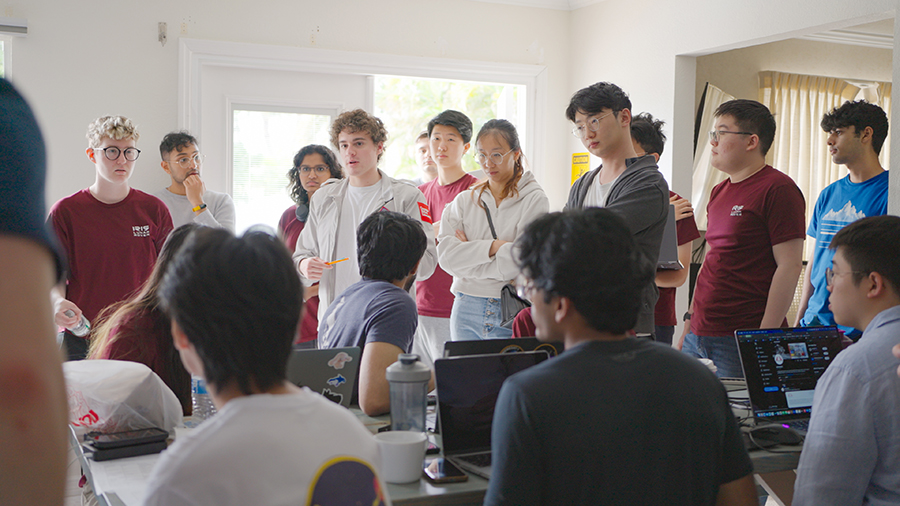CMU's Iris Rover: A Heartbeat in Space, a Legacy on Earth SCS Students Part of Team That Turned Challenges Into Opportunity
Alexander JohnsonFriday, January 19, 2024Print this page.

Shortly after the Jan. 8 liftoff of the United Launch Alliance Vulcan rocket carrying their rover, Carnegie Mellon University's on-site Iris team filed into their rental house in Florida.
Hours after rousing speeches from team leadership, hopeful messages and the perfect launch, they learned that Iris, the lunar rover built by 300 students from across CMU's seven colleges, wouldn't make it to the moon. An anomaly in Astrobotic's Peregrine lander, to which Iris was bolted, would likely prevent a soft landing on the lunar surface.
Rather than find themselves discouraged, the students jumped into action. They transformed their rental home into an impromptu command center and decided to make the most of any time remaining in its journey. Team members extended their stays in Florida, booking hotels or staying with relatives as events unfolded.
"Our team wanted to figure out what we could do to better science, or any technical capabilities of our rover," said Nikolai Stefanov, the mission control lead for Iris and a fifth-year senior studying physics and computer science.
While Iris wouldn't be a rover in the traditional sense, it was still a space-faring object that was actively making history. The team dropped everything to make sure that it continued to do so. When they could retrieve information and check the status of Iris' systems from hundreds of thousands of miles away, they knew that it was a success story unlike any other: a heartbeat in space. It was proof that years of hypothesizing, building and testing had worked, even in the face of uncertainty.
The 2.2-kilogram rover was the first of its kind to survive a launch and a zero-gravity environment. Its primary systems, tucked within a shoebox-sized carbon fiber chassis, performed well as the rover endured extreme temperatures and high levels of radiation. Even through lapses in signal and changes in objective, Iris persevered. For the students, it became a symbol of resilience and a testament to their ability to pivot on the fly.
Iris returned to Earth's atmosphere above the remote South Pacific Ocean on Thursday, Jan. 18, and disintegrated upon reentry. While Iris' journey didn't go as planned, the students succeeded in building a piece of space-faring technology that has made it farther from Earth and closer to the moon than any student-built rover to date.
Raewyn Duvall, the Iris program manager and a rover executive director, noted that the team's work has already made a substantial impact on space and robotics work at CMU.
"A lot of lessons learned have already gone into projects like MoonRanger," said Duvall, who was previously at NASA and is now a research associate in the Robotics Institute.
But perhaps more importantly, Iris and its student team have established a legacy of teamwork and inclusion. "One of the goals of Iris at a fundamental and broad level is to open up space to more people," said Carmyn Talento, the representation team lead for Iris and a senior in CMU's Bachelor of Science and Arts program. "If we've learned anything from this, it's that that's a good idea and needs to happen sooner rather than later.
"Iris' legacy is to open up space to students, to young people, to enthusiasts, to dreamers," Talento said.
Read the full story on the CMU News website.
Aaron Aupperlee | 412-268-9068 | aaupperlee@cmu.edu
